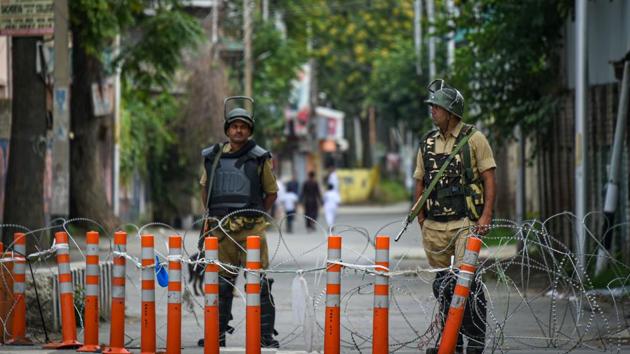Want to avoid repeat of Kashmir unrest of 2016: Centre tells Supreme Court
Venugopal said the government had proof that Kashmiri separatists, acting on instructions from across the border, had instigated people to hit the streets in 2016.
The Centre ordered a clampdown in the Kashmir Valley before ending Jammu and Kashmir’s special status to avoid the bloody protests and killings that happened in 2016 after the elimination of Hizbul commander Burhan Wani, the government’s top law officer told the Supreme Court on Tuesday.

Attorney General KK Venugopal, who was responding to a petition against the restrictions on movement of people and political leaders in Jammu and Kashmir, said 44 lives were lost in street protests that followed the killing of three militants in 2016.
The judges have declined to intervene for now, and will take up the petition against the restrictions after two weeks.
Venugopal said the government had proof that Kashmiri separatists, acting on instructions from across the border, had instigated people to hit the streets in 2016.
It is this situation and loss of life that the government was trying to avoid, the top law officer told a bench led by Justice Arun Mishra.
WATCH| ‘Article 370 removal will end terrorism in Kashmir’: Amit Shah
The 2016 protests in the Kashmir valley had lasted three months, he said, adding that the government expected normalcy to return much sooner this time.
“The situation is being reviewed every day and there are signs of improvement,” Venugopal said.
Discontent has simmered in Kashmir since the early hours of August 5, when phone and Internet lines were suspended and restrictions on movement and assembly of people clamped. Later that day, the government moved to nullify Article 370, which accorded special status to Jammu & Kashmir, and bifurcate the state into two Union Territories – J&K with a legislative assembly, and Ladakh without one.
Venugopal also stressed that not a single life had been lost over the last week or so.
There have been isolated instances of stone throwing by small groups but the biggest achievement has been what the government calls the absence of large-scale violence. “The citizens are cooperating with us, we will not let any mischievous element cause problems,” Jammu and Kashmir’s inspector general SP Pani said this week.
Security experts such as Lt General (Retd) DS Hooda, the former General Officer Commanding-in-chief, Northern Command, have argued that though a parallel could be drawn with 2016, the government and security forces are much better prepared today to deal with any disturbance.
“…the recent pre-emptive deployment of additional forces into Jammu and Kashmir enables the state government to deal appropriately with any situation,” Lt General Hooda said in an article soon after the Centre’s decision.
The key, if large-scale protests do erupt, would be how the security forces handle them. The Centre is conscious how casualties in police action trying to control mobs back in 2016 ended up fueling more protests.
It is a concern, security officials said, that had been receiving top priority from the government right from the time thousands of paramilitary forces were moved to Kashmir long before the two laws were passed.






